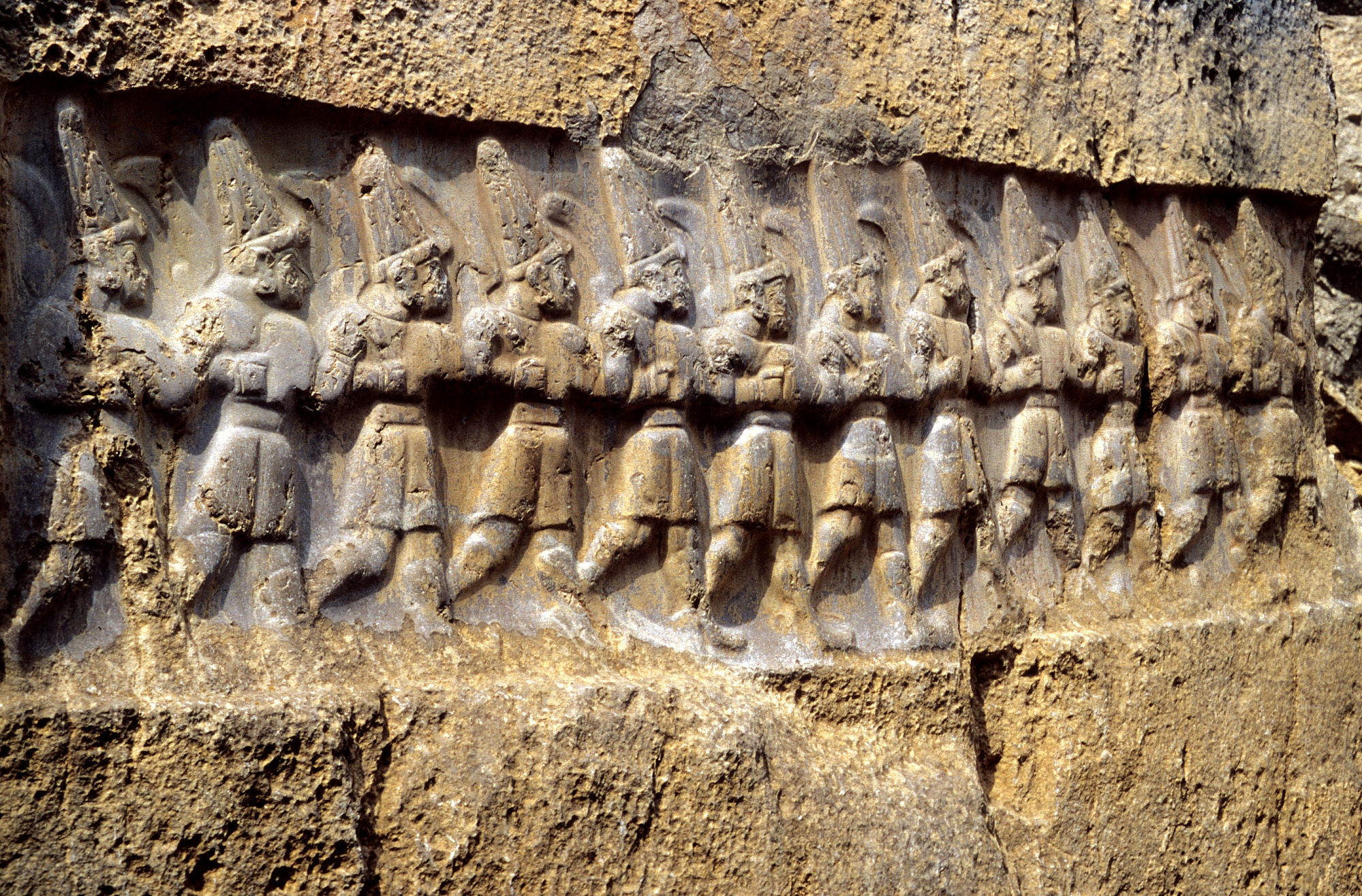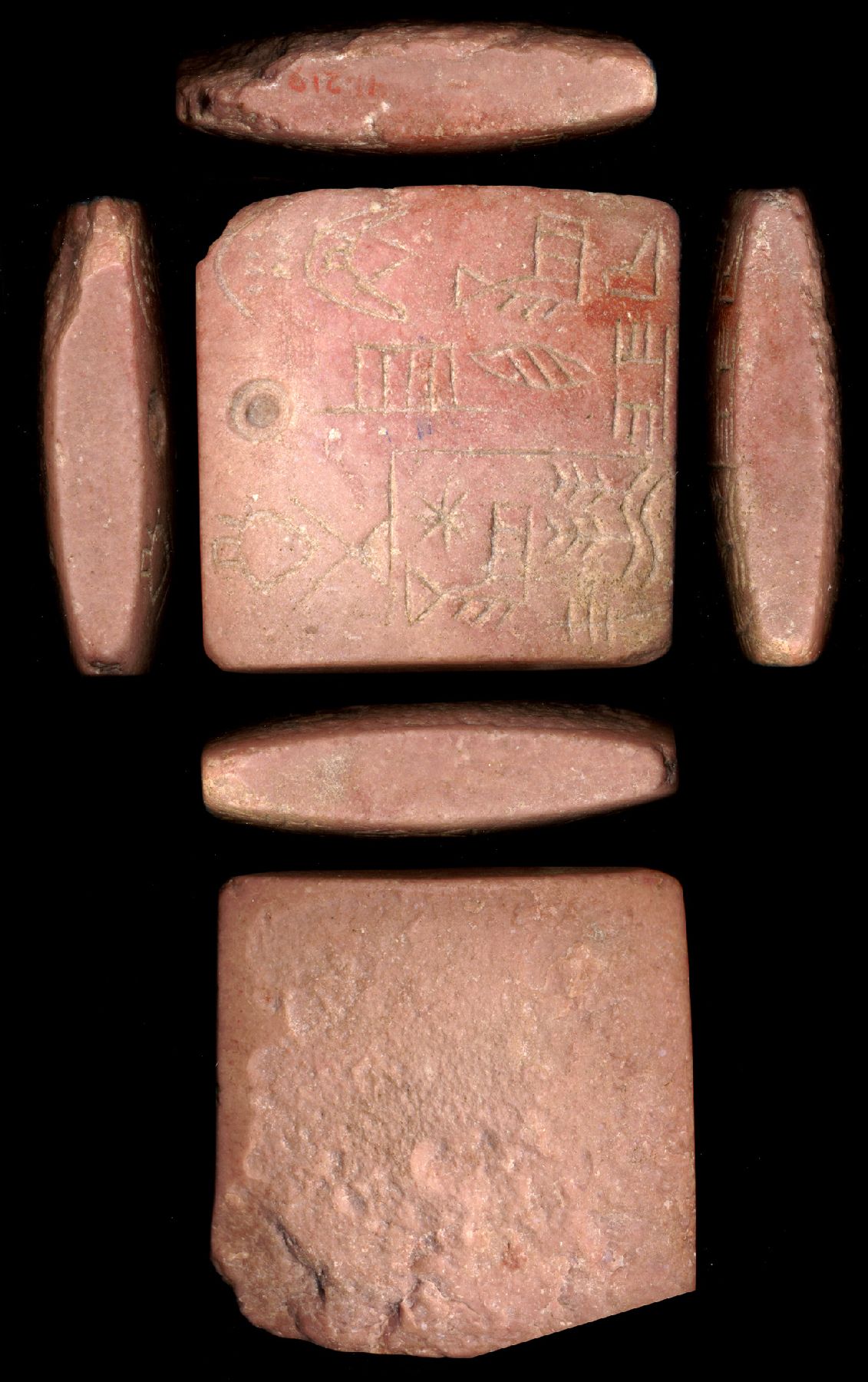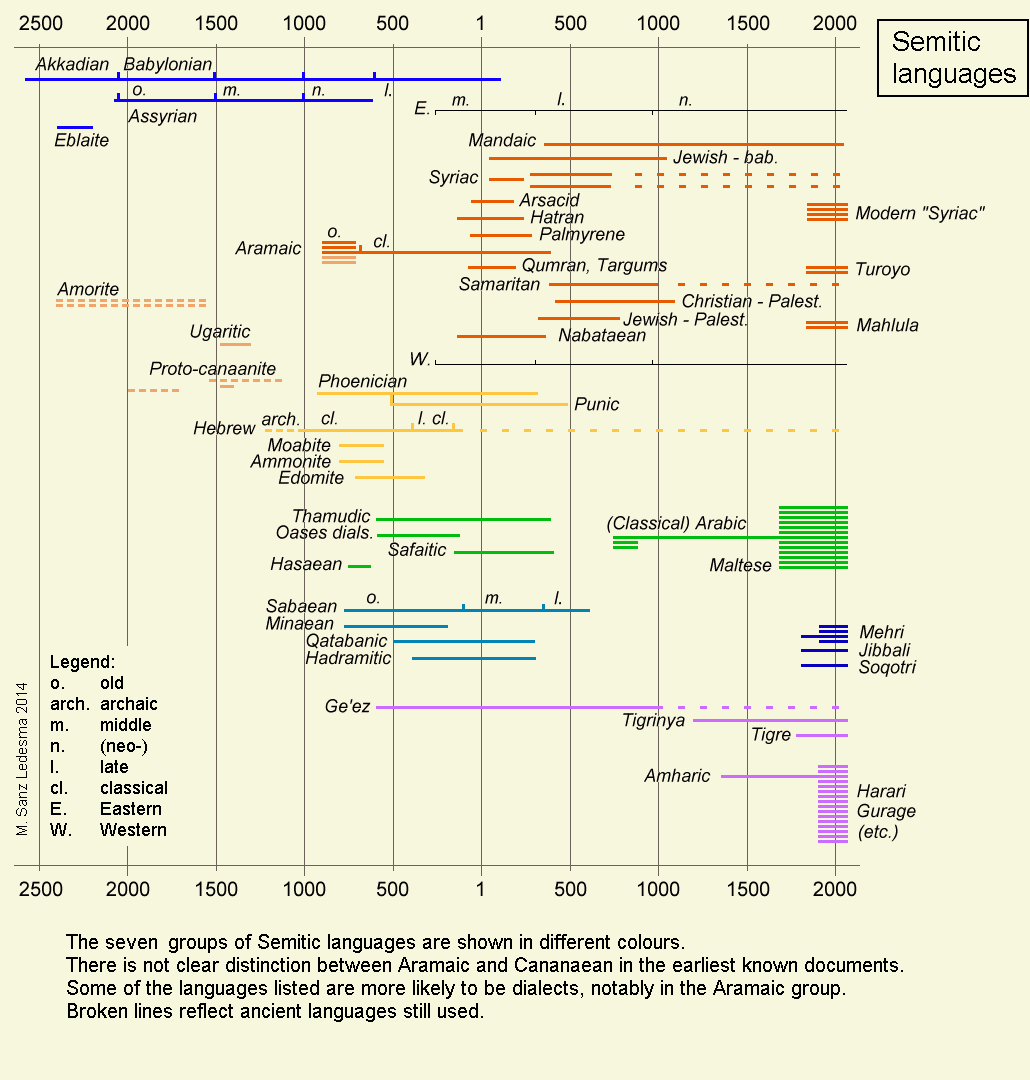|
Kubaba (goddess)
Kubaba was a goddess of uncertain origin worshiped in ancient Syria. Despite the similarity of her name to these of legendary queen Kubaba of Kish (Sumer), Kish and Phrygians, Phrygian Cybele, she is considered a distinct figure from them both. Her character is poorly known. Multiple local traditions associating her with other deities existed, and they cannot necessarily be harmonized with each other. She is first documented in texts from Kanesh and Alalakh, though her main cult center was Carchemish. She was among the deities worshiped in northern Syria who were incorporated into Hurrian religion, and in Hurrian context she occurs in some of the Ugaritic texts. She was also incorporated into Hittite religion through Hurrian intermediaties. In the first millennium BCE she was worshiped by Luwians, Arameans and Lydians, and references to her can be found in a number of Greek texts. Name The theonym Kubaba was written in cuneiform as ''dingir, dku-ba-ba'' or ''dku-pa-pa'', with the ... [...More Info...] [...Related Items...] OR: [Wikipedia] [Google] [Baidu] |
Carchemish
Carchemish ( or ), also spelled Karkemish (), was an important ancient capital in the northern part of the region of Syria. At times during its history the city was independent, but it was also part of the Mitanni, Hittite and Neo-Assyrian Empires. Today it is on the frontier between Turkey and Syria. It was the location of an important battle, about 605 BC, between the Babylonians and Egyptians, mentioned in the Bible (Jer. 46:2, 2 Chron. 35:20). Modern neighbouring cities are Karkamış in Turkey and Jarabulus in Syria (also Djerablus, Jerablus, Jarablos, Jarâblos). Geography of the site Carchemish is now an extensive set of ruins (90 hectares, of which 55 lie in Turkey and 35 in Syria), located on the West bank of Euphrates River, about southeast of Gaziantep, Turkey, and northeast of Aleppo, Syria. The site is crossed by the Baghdad Railway that now forms the Turco-Syrian border. The site includes an acropolis along the river, an Inner Town encircled by earthe ... [...More Info...] [...Related Items...] OR: [Wikipedia] [Google] [Baidu] |
Dingir
''Dingir'' ⟨⟩, usually transliterated DIĜIR, () is a Sumerian word for 'god' or 'goddess'. Its cuneiform sign is most commonly employed as the determinative for religious names and related concepts, in which case it is not pronounced and is conventionally transliterated as a superscript ⟨d⟩, e.g. The Sumerian cuneiform sign by itself was originally an ideogram for the Sumerian word ''an'' ('sky' or 'heaven');Hayes, 2000 its use was then extended to a logogram for the word ('god' or 'goddess')Edzard, 2003 and the supreme deity of the Sumerian pantheon Anu, and a phonogram for the syllable . Akkadian cuneiform took over all these uses and added to them a logographic reading for the native '' ilum'' and from that a syllabic reading of . In Hittite orthography, the syllabic value of the sign was again only ''an''. The concept of divinity in Sumerian is closely associated with the heavens, as is evident from the fact that the cuneiform sign doubles as the ideogram f ... [...More Info...] [...Related Items...] OR: [Wikipedia] [Google] [Baidu] |
Belili
Belili was a Mesopotamian goddess. This name refers both to a sister of Dumuzi known from some of the texts pertaining to his death, and to a primordial deity paired with Alala and listed in enumerations of ancestors of Anu. There is no consensus among researchers if they should be considered one and the same. Name Belili's name has no plausible etymology in Sumerian or any Semitic language, and based on its structure it has been compared to other divine names whose origin also remains a mystery, such as Alala, Aruru, Bunene and Zababa. Belili is also attested as an ordinary given name, one of the so-called banana names known from both Mesopotamia and Elam. Names with this structure are particularly common in the earliest Akkadian documents from Gasur (later known as Nuzi). It has been proposed that such names, both divine and ordinary, originate in a substrate language (so-called " proto-Euphratic"), but this conclusion is not universally accepted, and Gonzalo Rubio poi ... [...More Info...] [...Related Items...] OR: [Wikipedia] [Google] [Baidu] |
Aruru (goddess)
Aruru was a Mesopotamian goddess. The origin of her name is presently uncertain. While initially considered an independent deity associated with vegetation and portrayed in hymns as violent, she eventually came to be viewed as analogous Ninhursag. Her name could also function as an epithet of goddesses such as Nisaba and Ezina- Kusu. She was often called the older sister of Enlil. Her cult centers most likely were the cities of Kesh, Adab and Irisaĝrig. She appears in a number of literary texts, some of which preserve information about her original character. She is also present in the ''Epic of Gilgamesh'', which portrays her as the creator of Enkidu. Name and character The etymology of the theonym Aruru ('' dA-ru-ru'', 𒀭𒀀𒊒𒊒) is considered either uncertain or unknown. A connection with Sumerian ''a-ru'' or ''a-ri'', which can be translated as "the one who lets the seed flow," has been deemed implausible by Manfred Krebernik, as this term is only used in this s ... [...More Info...] [...Related Items...] OR: [Wikipedia] [Google] [Baidu] |
Alalu
Alalu or Alala was a primordial figure in Mesopotamian and Hurrian mythology. He is also known from documents from Emar, where he was known as Alal. While his role was not identical in these three contexts, it is agreed that all three versions share the same origin. Hurrian Alalu, who plays the role of the oldest king of gods in the ''Kumarbi Cycle'', is the best known, and is commonly discussed in scholarship focused on comparative mythology but it is agreed Mesopotamian Alala represents the oldest tradition regarding this being. However, the precise etymology of his name is unknown, and likely neither Sumerian nor Semitic. Both Hurrian and Mesopotamian sources attest an association between him and Anu, but its nature varies between cultures. Mesopotamian sources The origin of the name Alala is not known, and in scholarship it is tentatively grouped with other Mesopotamian deity names with no clear Sumerian or Semitic etymologies, such as Zababa, Aruru or Bunene. Alala is ... [...More Info...] [...Related Items...] OR: [Wikipedia] [Google] [Baidu] |
Sumerian Language
Sumerian ) was the language of ancient Sumer. It is one of the List of languages by first written account, oldest attested languages, dating back to at least 2900 BC. It is a local language isolate that was spoken in ancient Mesopotamia, in the area that is modern-day Iraq, Iraq. Akkadian language, Akkadian, a Semitic languages, Semitic language, gradually replaced Sumerian as the primary spoken language in the area (the exact date is debated), but Sumerian continued to be used as a sacred, ceremonial, literary, and scientific language in Akkadian-speaking Mesopotamian states, such as Assyria and Babylonia, until the 1st century AD. Thereafter, it seems to have fallen into obscurity until the 19th century, when Assyriologists began Decipherment, deciphering the cuneiform inscriptions and excavated tablets that had been left by its speakers. In spite of its extinction, Sumerian exerted a significant influence on the languages of the area. The Cuneiform, cuneiform script, original ... [...More Info...] [...Related Items...] OR: [Wikipedia] [Google] [Baidu] |
Aramaic Alphabet
The ancient Aramaic alphabet was used to write the Aramaic languages spoken by ancient Aramean pre-Christian peoples throughout the Fertile Crescent. It was also adopted by other peoples as their own alphabet when empires and their subjects underwent linguistic Aramaization during a language shift for governing purposes — a precursor to Arabization centuries later — including among the Neo-Assyrian Empire, Assyrians and Neo-Babylonian Empire, Babylonians who permanently replaced their Akkadian language, Akkadian language and its cuneiform script with Aramaic and its script, and among Jews, but not Samaritans, who adopted the Aramaic language as their vernacular and started using the Aramaic alphabet, which they call "Ktav Ashuri, Square Script", even for writing Hebrew language, Hebrew, displacing the former Paleo-Hebrew alphabet. The modern Hebrew alphabet derives from the Aramaic alphabet, in contrast to the modern Samaritan script, Samaritan alphabet, which derives from Pa ... [...More Info...] [...Related Items...] OR: [Wikipedia] [Google] [Baidu] |
Hieroglyphic Luwian
Luwian (), sometimes known as Luvian or Luish, is an ancient language, or group of languages, within the Anatolian languages, Anatolian branch of the Indo-European languages, Indo-European language family. The ethnonym Luwian comes from ''Luwiya'' (also spelled ''Luwia'' or ''Luvia'') – the name of the region in which the Luwians lived. Luwiya is attested, for example, in the Hittite laws. The two varieties of Luwian are known after the scripts in which they were written: #Cuneiform Luwian, Cuneiform Luwian (''CLuwian'') and Hieroglyphic Luwian (''HLuwian''). There is no consensus as to whether these were a single language or two closely related languages. Classification Several other Anatolian languages – particularly Carian language, Carian, Lycian language, Lycian, and Milyan (also known as Lycian B or Lycian II) – are now usually identified as related to Luwian – and as mutually connected more closely than other constituents of the Anatolian branch.Anna Bauer, 2014, ... [...More Info...] [...Related Items...] OR: [Wikipedia] [Google] [Baidu] |
Ugaritic Alphabet
The Ugaritic alphabet is an abjad (consonantal alphabet) with syllabic elements written using the same tools as cuneiform (i.e. pressing a wedge-shaped stylus into a clay tablet), which emerged or 1300 BCE to write Ugaritic, an extinct Northwest Semitic language; it fell out of use amid the Late Bronze Age collapse . It was discovered in Ugarit (modern Ras Shamra, Syria) in 1928. It has 30 letters. Other languages, particularly Hurrian language, Hurrian, were occasionally written in the Ugaritic script in the area around Ugarit, but not elsewhere. Clay tablets written in Ugaritic provide the earliest evidence of both the North Semitic and South Semitic orders of the alphabet, which gave rise to the alphabetic orders of the reduced Phoenician alphabet, Phoenician writing system and its descendants, including the Paleo-Hebrew alphabet, Hebrew alphabet, Hebrew, Syriac alphabet, Syriac, Greek alphabet, Greek and Latin alphabet, Latin, and of the Geʽez script, which was also in ... [...More Info...] [...Related Items...] OR: [Wikipedia] [Google] [Baidu] |
Suffix
In linguistics, a suffix is an affix which is placed after the stem of a word. Common examples are case endings, which indicate the grammatical case of nouns and adjectives, and verb endings, which form the conjugation of verbs. Suffixes can carry grammatical information (inflectional endings) or lexical information ( derivational/lexical suffixes)''.'' Inflection changes the grammatical properties of a word within its syntactic category. Derivational suffixes fall into two categories: class-changing derivation and class-maintaining derivation. Particularly in the study of Semitic languages, suffixes are called affirmatives, as they can alter the form of the words. In Indo-European studies, a distinction is made between suffixes and endings (see Proto-Indo-European root). A word-final segment that is somewhere between a free morpheme and a bound morpheme is known as a suffixoidKremer, Marion. 1997. ''Person reference and gender in translation: a contrastive investigation of ... [...More Info...] [...Related Items...] OR: [Wikipedia] [Google] [Baidu] |
Semitic Languages
The Semitic languages are a branch of the Afroasiatic languages, Afroasiatic language family. They include Arabic, Amharic, Tigrinya language, Tigrinya, Aramaic, Hebrew language, Hebrew, Maltese language, Maltese, Modern South Arabian languages and numerous other ancient and modern languages. They are spoken by more than 330 million people across much of Western Asia, West Asia, North Africa, the Horn of Africa, Malta, and in large Immigration, immigrant and Expatriate, expatriate communities in North America, Europe, and Australasia. The terminology was first used in the 1780s by members of the Göttingen school of history, who derived the name from Shem, one of the three Generations of Noah, sons of Noah in the Book of Genesis. Semitic languages List of languages by first written account, occur in written form from a very early historical date in West Asia, with East Semitic languages, East Semitic Akkadian language, Akkadian (also known as Ancient Assyrian language, Assyrian ... [...More Info...] [...Related Items...] OR: [Wikipedia] [Google] [Baidu] |
Morpheme
A morpheme is any of the smallest meaningful constituents within a linguistic expression and particularly within a word. Many words are themselves standalone morphemes, while other words contain multiple morphemes; in linguistic terminology, this is the distinction, respectively, between free and bound morphemes. The field of linguistic study dedicated to morphemes is called morphology. In English, inside a word with multiple morphemes, the main morpheme that gives the word its basic meaning is called a root (such as ''cat'' inside the word ''cats''), which can be bound or free. Meanwhile, additional bound morphemes, called affixes, may be added before or after the root, like the ''-s'' in ''cats'', which indicates plurality but is always bound to a root noun and is not regarded as a word on its own. However, in some languages, including English and Latin Latin ( or ) is a classical language belonging to the Italic languages, Italic branch of the Indo-European langua ... [...More Info...] [...Related Items...] OR: [Wikipedia] [Google] [Baidu] |






